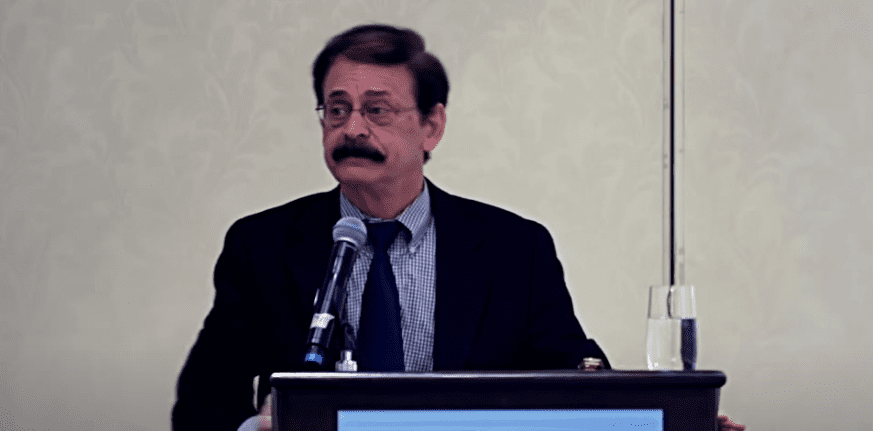Until recently, the consensus of historians was that the First Jewish Temple in Jerusalem built by King Solomon in 957 BCE was looted and then destroyed in 586 BCE by the Babylonian king Nebuchadnezzar II who then deported the Jews to Babylon.
This was explicitly described in several places in the Bible:
On the seventh day of the fifth month—that was the nineteenth year of King Nebuchadnezzar of Babylon—Nebuzaradan, the chief of the guards, an officer of the king of Babylon, came to Yerushalayim. He burned the House of Hashem, the king’s palace, and all the houses of Yerushalayim; he burned down the house of every notable person. II Kings 25:8-9
On the tenth day of the fifth month—that was the nineteenth year of King Nebuchadrezzar, the king of Babylon—Nebuzaradan, the chief of the guards, came to represent the king of Babylon in Yerushalayim. He burned the House of Hashem, the king’s palace, and all the houses of Yerushalayim; he burned down the house of every notable person. Jeremiah 52:12
He also rebelled against Nebuchadnezzar, who made him take an oath by Hashem; he stiffened his neck and hardened his heart so as not to turn to God of Yisrael… All the vessels of the House of Hashem, large and small, and the treasures of the House of Hashem and the treasures of the king and his officers were all brought to Babylon.They burned the House of Hashem and tore down the wall of Yerushalayim, burned down all its mansions, and consigned all its precious objects to destruction.Those who survived the sword he exiled to Babylon, and they became his and his sons’ servants till the rise of the Persian kingdom, II Chronicles 36:13-20
Richard Elliott Friedman, a professor of Jewish Studies at the University of Georgia, presented a new theory in a paper titled “The Destruction of the First Jerusalem Temple” published in Academia. Friedman cites four different places in the Bible in which the destruction of Jerusalem by the Babylonians is described: II Kings 25:9, II Kings 15, Jeremiah 39:8, and II Chronicles 36:19.

Friedman notes that in II Chronicles 36 the destruction of the Temple, buildings, and wall are described but, unlike in the other descriptions, the palace is not mentioned. The description in Jeremiah 52, what the professor describes as “the fullest account of the final events in Judah that year”, omits the destruction of the temple. The other three descriptions Friedman labels “abbreviated summary reports”.
Friedman attributes the omission of the palace in Jeremiah to haplography, the most common scribal error in which while copying the manuscript, the scribe’s eye jumps from a word to its next occurrence in the text. Friedman suggests that the original text in Jeremiah read, “the house of Yahweh [God] and the house of the king,” with the scribal copy omitting the words “the house of God.”
As further proof, Friedman cites the description of the murder of Gedaliah in Jeremiah 41 which took place several months after the destruction described in chapter 39. The Babylonian king has left Gedaliah in charge of Judea. A relative of the royal family, with ten accomplices, murders Gedaliah and his retinue. Two days later, while the assassination is still unknown, the killers encounter a large group on their way to the Temple.
The second day after Gedalya was killed, when no one yet knew about it, eighty men came from Shechem, Shilo, and Shomron, their beards shaved, their garments torn, and their bodies gashed, carrying meal offerings and frankincense to present at the House of Hashem. Jeremiah 41:4-5
This event presents the difficult question of why people would be bringing offerings to the Temple after it had been destroyed. According to Rabbi Isaac ben Judah Abarbanel, a 15th-century Portuguese Biblical scholar, and the Talmud (Meg 10a), the Jews continued to perform the Temple service on the Temple Mount even after the destruction of the Temple.
Friedman suggests another scenario in which the Temple is still standing at the time that Gedaliah was murdered.
“The only reason we assumed that the Temple was destroyed at that time was that the other three (really two) versions said so,” Friedman wrote. “But those one-verse versions were just doing what brief summary versions commonly do: they collapsed events that were separate into a single summary report.”
Friedman then brings a verse from Psalms to account for the later destruction of the Temple.
Remember, Hashem, against the Edomites the day of Yerushalayim‘s fall; how they cried, “Strip her, strip her to her very foundations!” Psalms 137:7
This is further confirmed by a description in Esdras (4:45), books attributed to or associated with Ezra the scribe that are in or related to the Christian Bibles, that describe Edom as being guilty of burning the Temple.
And, again, Edom’s guilt is hinted at by the prophet Obadiah.
For the outrage to your brother Yaakov, Disgrace shall engulf you, And you shall perish forever Obadiah 1:10
Friedman also gives applies a motive to Edom’s alleged criminal burning of Solomon’s Temple:
“The Babylonians had reason to destroy the palace of a Judean king who had rebelled
against them,” Friedman wrote. “They had reason to demolish Jerusalem’s protecting walls. But they didn’t necessarily have a reason to destroy the Temple. Edom, however, had a long history of enmity with Judah.”




